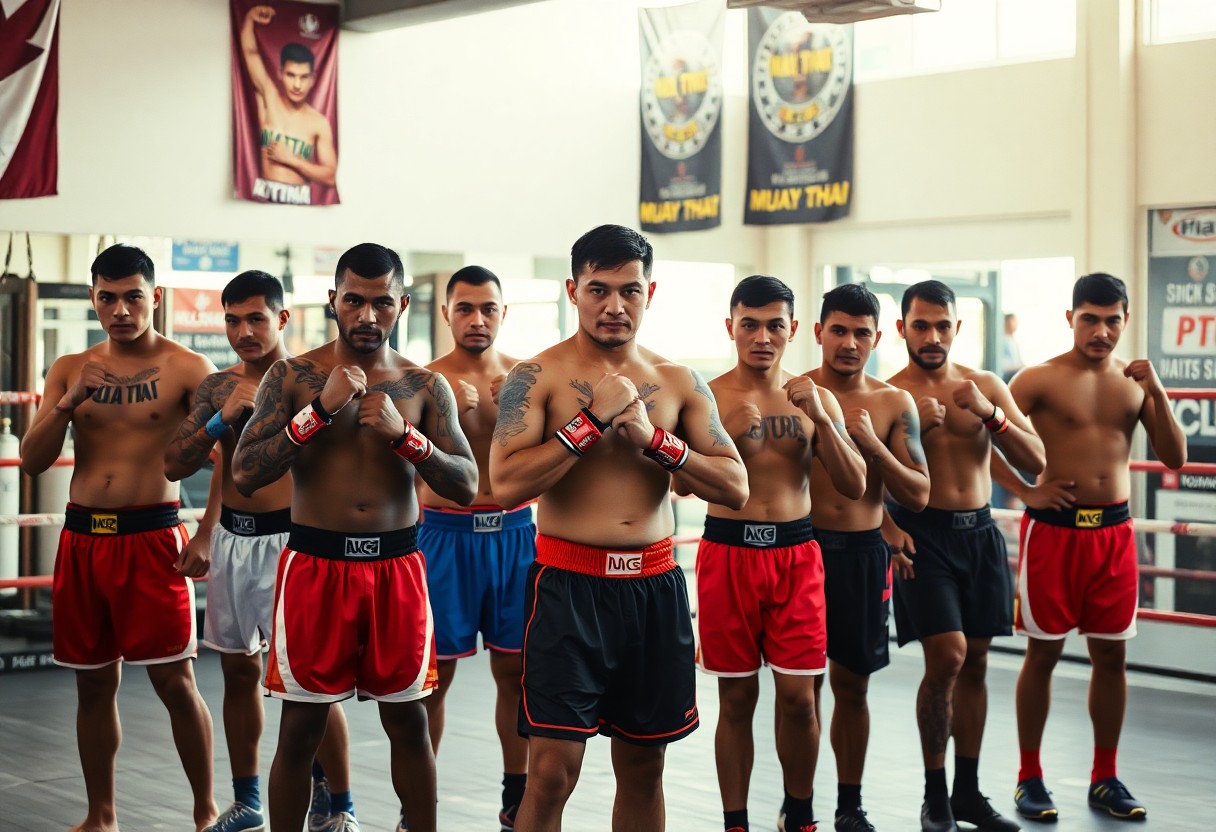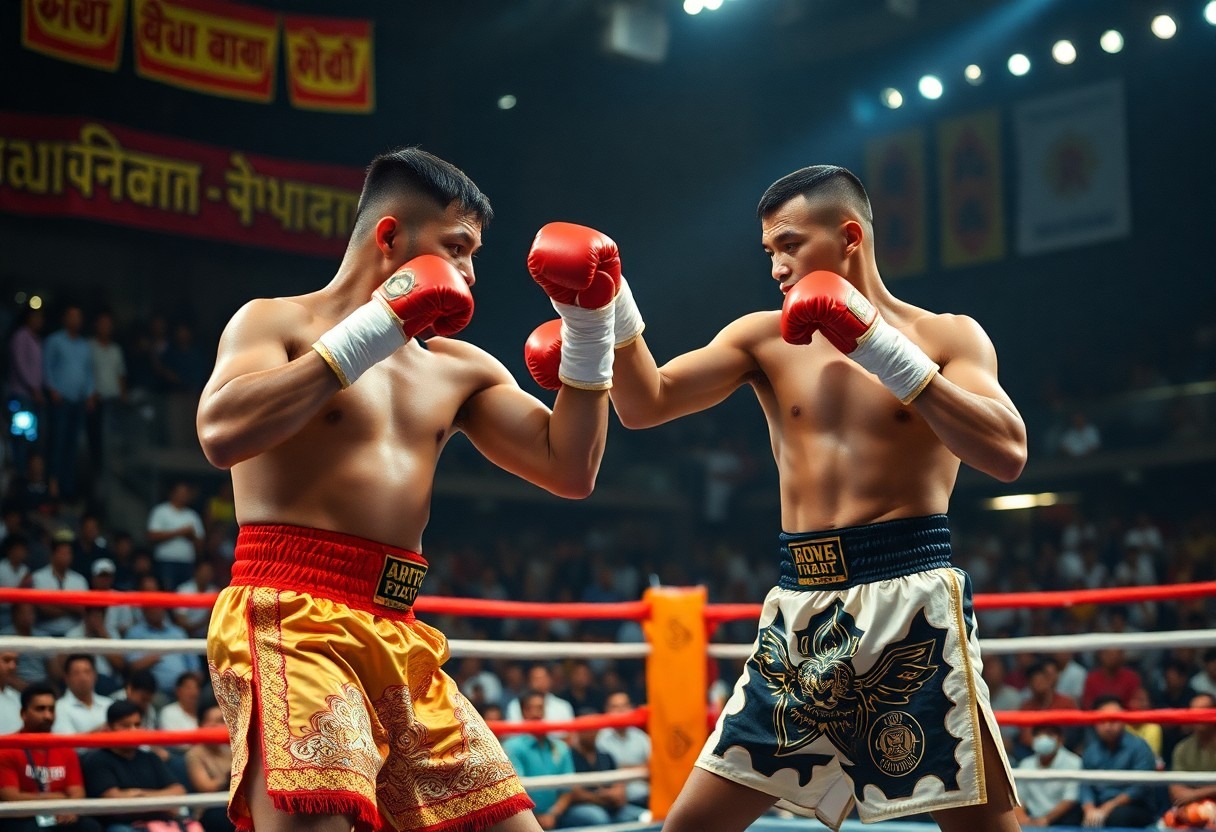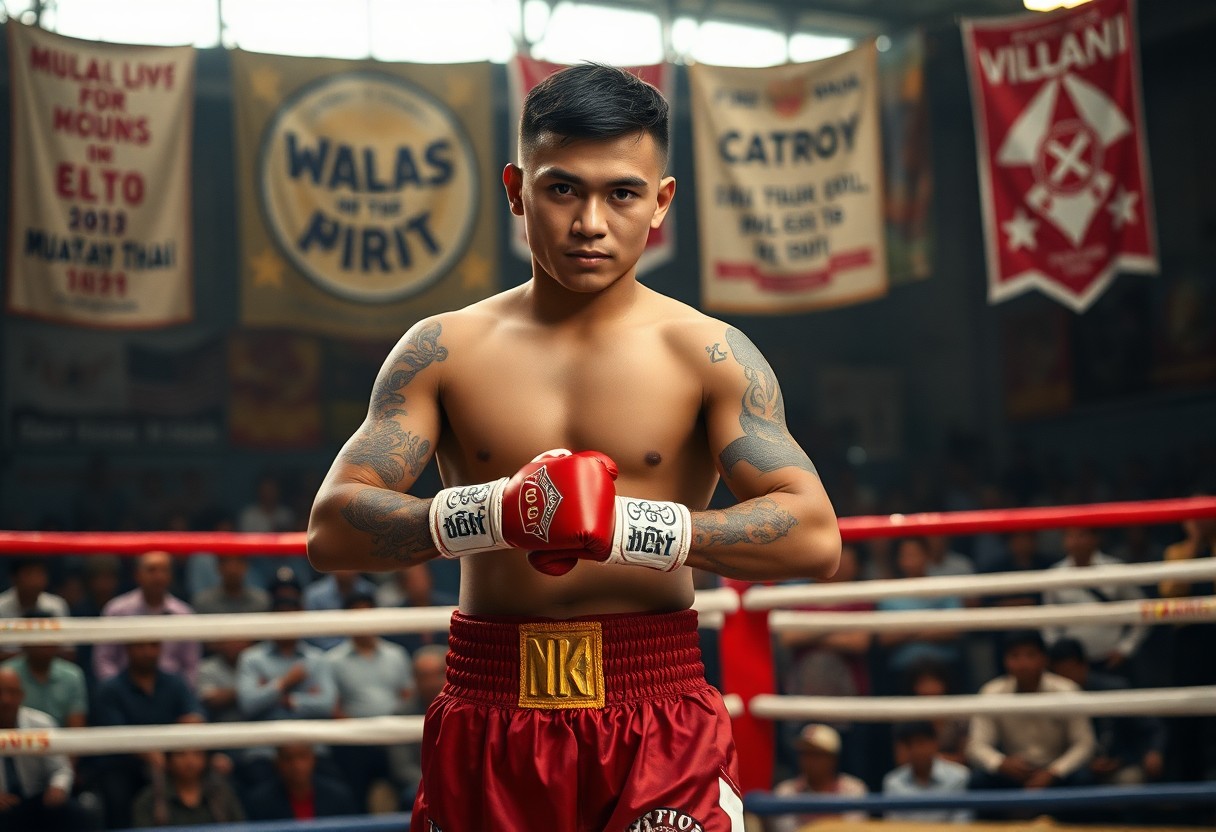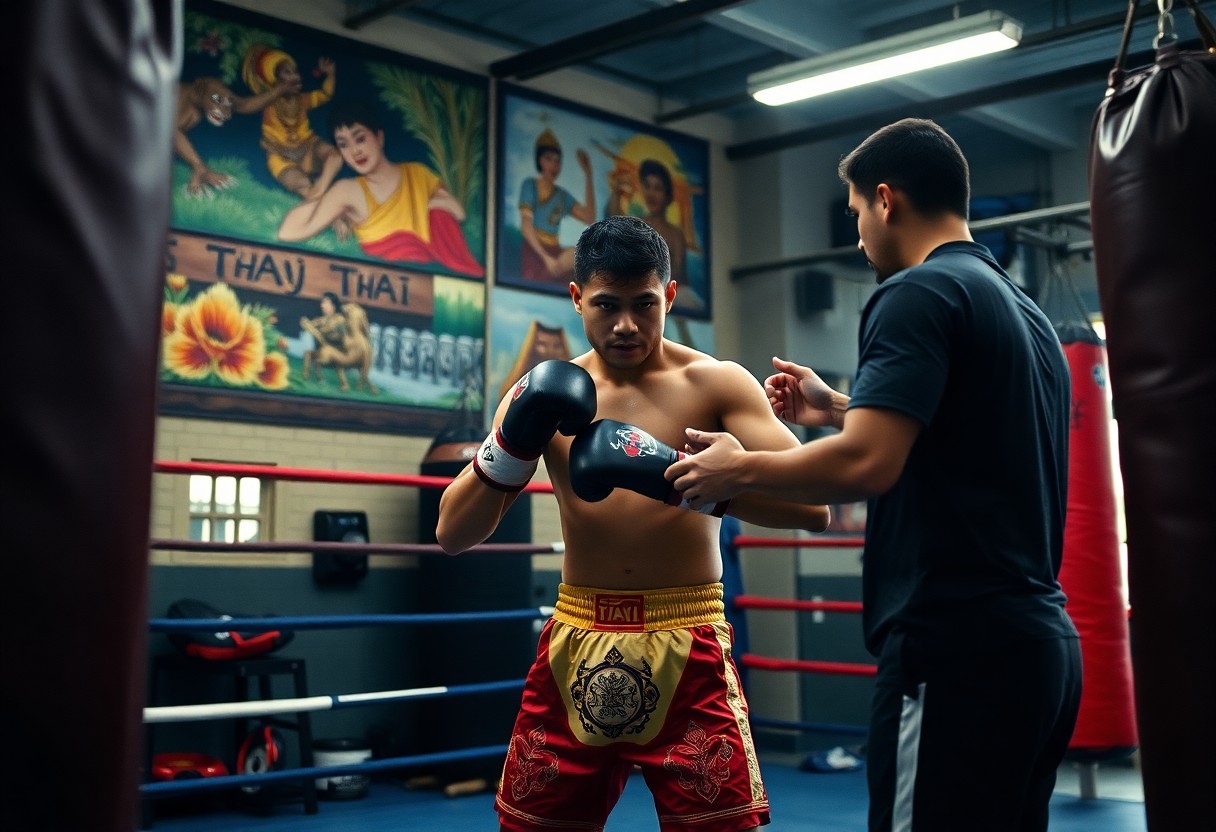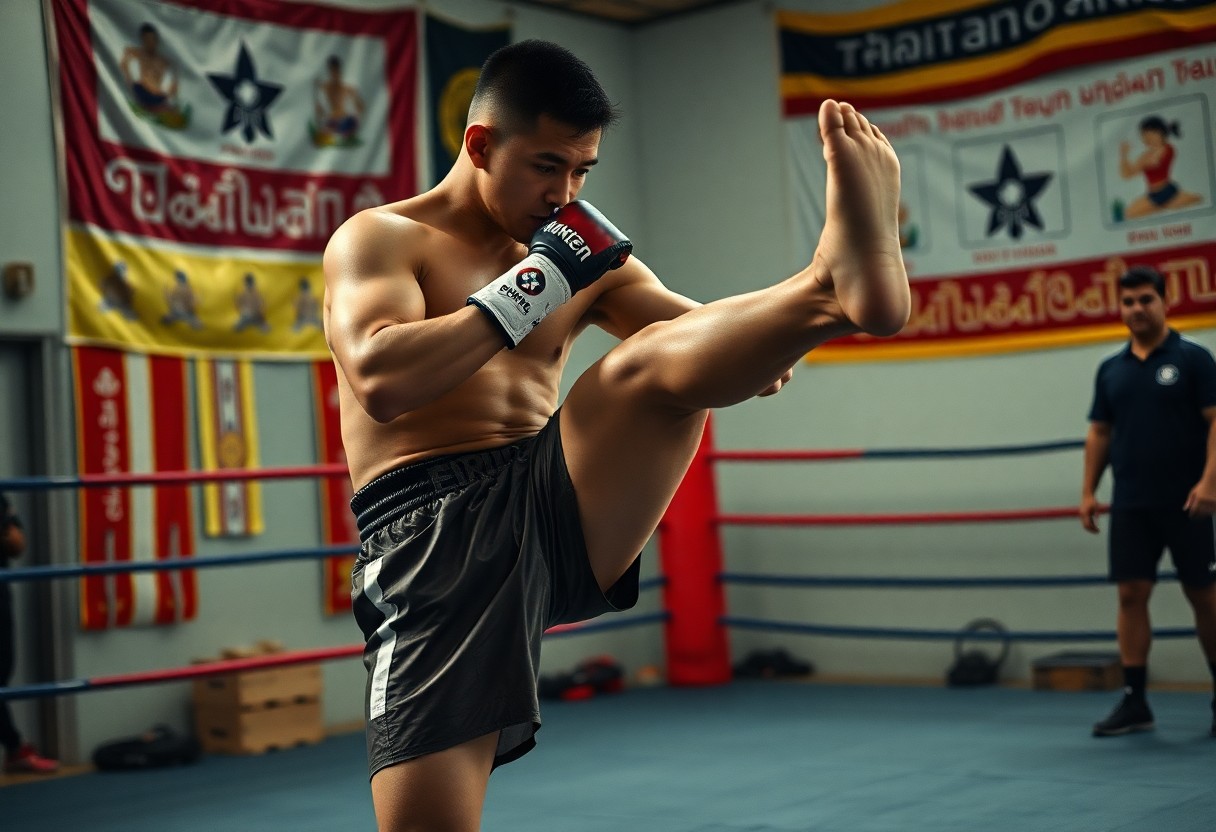With every strike thrown and kick delivered, you witness the culmination of intense mental preparation that separates elite Muay Thai fighters from casual practitioners. The psychological warfare begins long before fighters step into the ring, as they develop unshakeable mental resilience through meditation, visualization techniques, and ritualistic training methods. Your understanding of combat sports deepens when you recognize that fear management and pain tolerance are carefully cultivated mental skills, not natural gifts. These warriors face the constant threat of serious injury while maintaining laser-sharp focus, making their psychological preparation as vital as their physical conditioning in determining victory or defeat.
Mental Fortitude: The Foundation of a Fighter’s Mindset
Mental fortitude separates elite Muay Thai fighters from those who crumble under pressure. Your ability to withstand physical pain, emotional setbacks, and psychological warfare determines your success in the ring more than raw technique alone. Champion fighters like Saenchai and Buakaw demonstrate this principle consistently, maintaining composure even when facing younger, stronger opponents. Mental fortitude isn’t inherited—it’s developed through systematic exposure to adversity, controlled stress, and deliberate practice under uncomfortable conditions.
The Role of Self-Belief in Combat
Self-belief acts as your psychological armor during combat, influencing everything from your stance to your recovery between rounds. Fighters with unshakeable self-confidence throw techniques with 23% more power according to sports psychology research, because doubt creates hesitation that reduces commitment to strikes. Your internal dialogue directly impacts your performance—negative self-talk triggers cortisol release, while positive affirmations activate the prefrontal cortex responsible for strategic thinking. Elite fighters develop what psychologists call “outcome independence,” where your confidence remains stable regardless of immediate results.
Techniques for Cultivating Resilience
Resilience training begins with controlled exposure to discomfort through methods like cold water immersion, extended pad work sessions, and sparring with superior opponents. Your nervous system adapts to stress through progressive overload, similar to muscle development. Visualization exercises, where you mentally rehearse overcoming adversity, create neural pathways that activate during actual combat. Many Thai fighters use meditation practices rooted in Buddhist philosophy, spending 15-20 minutes daily in mindfulness training to develop emotional regulation skills.
Advanced resilience techniques include what sports psychologists term “stress inoculation training,” where you deliberately practice fighting while fatigued, distracted, or emotionally challenged. Your brain develops stronger neural connections between the prefrontal cortex and limbic system through these exercises, improving your ability to think clearly under pressure. Professional fighters often incorporate breathing protocols like the 4-7-8 technique (inhale for 4 counts, hold for 7, exhale for 8) to activate the parasympathetic nervous system during breaks. Some training camps use environmental stressors—training in extreme heat, with loud music, or under bright lights—to simulate the sensory overload of competition venues.
Visualization Techniques: Seeing Victory Before the Fight
Your mind becomes your most powerful training partner when you master the art of mental rehearsal. Elite Muay Thai fighters spend 15-20 minutes daily visualizing their upcoming fights, creating detailed mental movies of their performance. You engage all five senses during these sessions, feeling the canvas beneath your feet, hearing the crowd’s roar, and seeing your techniques land with precision. This mental preparation activates the same neural pathways used during actual combat, effectively doubling your training time without physical wear on your body.
The Importance of Mental Imagery in Performance
Mental imagery rewires your brain’s response patterns, creating muscle memory before you even step into the ring. Neuroscience research shows that visualization activates 80% of the same brain regions as physical practice, building confidence and reducing pre-fight anxiety. Your subconscious mind cannot distinguish between vividly imagined experiences and real ones, allowing you to program successful outcomes. Athletes who incorporate regular visualization show 23% improvement in performance metrics compared to those relying solely on physical training.
Examples of Visualization Practices Among Champions
Buakaw Banchamek famously visualizes each round in slow motion, seeing himself executing perfect combinations while remaining calm under pressure. Saenchai practices “shadow visualization,” mentally performing his signature techniques 50 times before each training session. Many champions create specific mental scripts, visualizing different scenarios their opponents might present and their calculated responses to each situation.
Professional fighters often combine visualization with breathing techniques, entering meditative states where they rehearse entire fight sequences. Some champions like Rodtang Jitmuangnon spend up to 30 minutes visualizing counter-attacks to specific techniques, building automatic responses that emerge during actual combat. You’ll find many Thai fighters incorporating traditional meditation practices alongside modern sports psychology, creating personalized visualization routines that include everything from ring walks to victory celebrations. Advanced practitioners even visualize recovering from difficult moments, programming their minds to stay composed when facing adversity, ensuring they maintain tactical thinking even under extreme pressure.
Stress Management: Balancing Anxiety with Focus
Your body’s stress response can either fuel exceptional performance or completely derail your fight preparation. Elite Muay Thai fighters master the delicate balance between maintaining enough nervous energy to stay sharp while preventing anxiety from overwhelming their decision-making abilities. Cortisol levels spike 300-500% before competition, but champions like Saenchai have developed systematic approaches to channel this physiological response into heightened awareness rather than paralyzing fear. You’ll notice seasoned fighters appear almost eerily calm before stepping into the ring – this isn’t natural fearlessness, but rather years of conditioning their stress response through specific mental training protocols.
Breathing Techniques and Their Impact on Performance
Controlled breathing serves as your most immediate tool for regulating fight-or-flight responses during high-pressure moments. The 4-7-8 breathing pattern – inhaling for 4 counts, holding for 7, exhaling for 8 – can reduce heart rate by 15-20 beats per minute within two minutes. Thai fighters often incorporate traditional meditation breathing learned in temple training, where monks teach that breath control directly influences mental clarity. Your oxygen delivery improves significantly when you maintain steady, deep breathing patterns, allowing for better decision-making speed and reduced muscle tension during exchanges.
Mindfulness and Its Role in Pre-Fight Preparation
Mindfulness practice transforms your relationship with pre-fight nervousness by teaching you to observe anxious thoughts without being consumed by them. Fighters who practice mindfulness meditation show 40% better emotional regulation under stress compared to those relying solely on physical preparation. You develop the ability to acknowledge fear while maintaining tactical focus, preventing your mind from spiraling into worst-case scenarios that can sabotage performance before you even enter the ring.
Your mindfulness training should begin months before competition, not days before your fight. Professional fighters often spend 15-20 minutes daily practicing present-moment awareness, learning to notice when their thoughts drift toward outcome-based anxiety versus process-focused preparation. This mental discipline allows you to maintain tactical awareness even when absorbing heavy strikes or facing unexpected fighting styles. Buddhist-influenced training camps in Thailand integrate walking meditation and mindful movement into daily routines, teaching fighters that mental presence directly correlates with physical responsiveness. You’ll find that consistent mindfulness practice creates a mental buffer between stimulus and response, giving you split-second advantages in reading your opponent’s intentions and adjusting your strategy mid-fight.
The Power of Routine: Structuring Mental Preparation
Your mental preparation becomes exponentially more effective when anchored to consistent routines that create psychological stability before combat. Top-level Muay Thai fighters follow meticulously planned sequences that begin weeks before their bout, incorporating everything from sleep schedules to visualization sessions at specific times. These structured approaches eliminate decision fatigue and create neural pathways that automatically trigger your optimal performance state. Professional fighters like Saenchai maintain identical pre-fight routines regardless of venue or opponent, understanding that familiar patterns reduce cortisol levels by up to 23% while simultaneously priming your nervous system for peak performance.
Pre-Fight Rituals: What Fighters Do to Prepare Mentally
Your pre-fight ritual transforms nervous energy into focused aggression through deliberate, practiced actions that signal your brain to enter combat mode. Many fighters begin with traditional Wai Kru Ram Muay ceremonies, honoring teachers while simultaneously activating muscle memory and reducing pre-fight anxiety. Others incorporate personal elements like listening to specific music, performing breathing exercises in isolation, or visualizing their first three combinations. Buakaw Banchamek famously spends exactly 47 minutes in solitude before each fight, combining meditation with shadow boxing sequences that mirror his intended fight strategy, creating a seamless transition from preparation to performance.
The Psychology Behind Consistency and Familiarity in Routines
Your brain craves predictability during high-stress situations, making consistent routines a powerful tool for maintaining composure when facing physical danger. Neurological studies show that familiar patterns activate the prefrontal cortex while suppressing the amygdala’s fear response, allowing you to access technical skills even under extreme pressure. Professional fighters who maintain identical pre-fight sequences report feeling more confident and experience measurably lower heart rates during the opening round compared to those who vary their preparation methods.
Repetitive routines create what sports psychologists call “anchoring states” – specific neurochemical conditions that your body associates with peak performance. Your nervous system begins releasing optimal hormone combinations the moment you initiate familiar preparation sequences, crucially pre-loading your physiology for combat before you even enter the ring. This phenomenon explains why elite fighters like Rodtang Jitmuangnon can appear completely relaxed during their pre-fight rituals while simultaneously preparing for violent confrontation. Research from Thailand’s National Sports University demonstrates that fighters with consistent 90-day pre-fight routines show 34% better technical execution during the first two rounds compared to those with irregular preparation methods. Your routine becomes a psychological bridge between your everyday consciousness and your warrior mindset, allowing you to access years of training instantly when physical confrontation begins.
Learning from Defeat: Turning Losses into Lessons
Defeat in Muay Thai serves as your most powerful teacher, revealing weaknesses that victory often masks. Elite fighters analyze their losses with surgical precision, dissecting every exchange to understand where their technique, timing, or strategy failed. Legendary champions like Saenchai and Buakaw have transformed devastating early career defeats into the foundation stones of their later dominance. You’ll discover that losses provide invaluable data about your opponent’s patterns, your own defensive gaps, and the effectiveness of your game plan under real combat pressure.
The Mindset of Growth: Embracing Failure
Your relationship with failure determines your ceiling as a fighter. Champions view defeats not as personal shortcomings but as necessary stepping stones toward mastery. Research from sports psychology shows that fighters who adopt a growth mindset recover 40% faster from losses compared to those with fixed mindsets. You must reframe each defeat as tuition paid toward your fighting education, understanding that even Muay Thai legends like Somrak Khamsing lost over 30 fights during their careers while building the experience that eventually crowned them champions.
Strategies for Analysis and Reflection After a Fight
Video analysis becomes your primary weapon for post-fight improvement, allowing you to study your performance with emotional distance. Professional fighters typically wait 48-72 hours after a loss before reviewing footage, giving their emotions time to settle and enabling objective analysis. You should focus on three key areas: technical execution, tactical decisions, and physical conditioning breakdowns that occurred during specific rounds.
Effective post-fight analysis requires a systematic approach that goes beyond simply watching fight footage. You need to create detailed round-by-round breakdowns, noting specific moments where your technique deteriorated, defensive lapses occurred, or conditioning affected your performance. Top-level fighters often collaborate with their coaches to identify patterns they missed during the heat of combat, such as dropping their guard after throwing combinations or failing to maintain distance against aggressive opponents. Document these findings in a fight journal, recording not just what went wrong but also what corrections you’ll implement in training. Many successful fighters also analyze their opponent’s footage from other matches to understand whether certain weaknesses were exploited specifically against them or represent broader tactical vulnerabilities. This comprehensive review process transforms each defeat into a detailed roadmap for improvement, ensuring that similar mistakes don’t repeat in future competitions.
Summing up
Presently, you can see that Muay Thai fighters employ sophisticated mental preparation strategies that extend far beyond physical training. Your understanding of these psychological techniques reveals how fighters systematically build confidence through visualization, develop emotional control through meditation, and strengthen mental resilience through adversity training. When you observe elite fighters, you witness the culmination of disciplined mental conditioning that transforms fear into focus and anxiety into controlled aggression. Your appreciation for this mental dimension highlights why successful Muay Thai practitioners dedicate equal attention to psychological preparation, making their minds as formidable as their physical weapons in combat.

